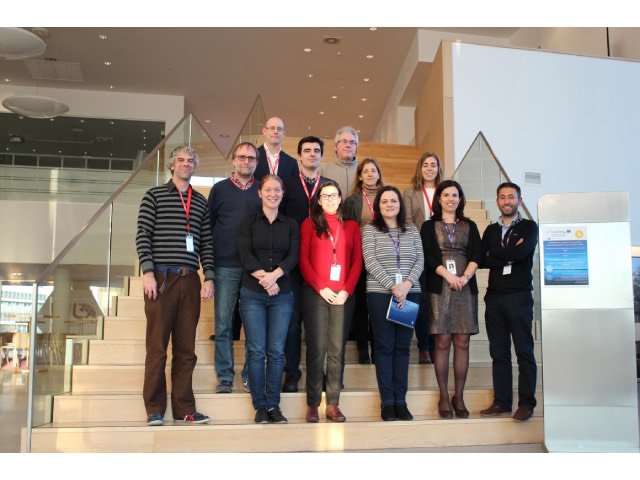An EU maritime study has identified a record-breaking ‘blue-light’ laser with the ability to transform underwater range-finding, imaging and communication across the maritime industry.
Scientists working on the €1million KETmaritime project have released a detailed report on the potential of ‘Photonic Marine Applications’.
Project coordinator Ana Vila from the International Iberian Nanotechnology Laboratory (INL) said the latest report has been produced by Spanish research centre AIMEN – known for its expertise in laser technology applied to materials, processing, robotics and automation.
It reveals new boundaries broken in marine laser development – enhancing the detection of underwater objects including submarines and archaeological sites.
The KETmaritime project is being delivered by a consortium of seven partners across Europe in an effort to identify ‘Key Enabling Technologies’ to support the future needs and demands of the Atlantic maritime industry.
“In recent months, France-based multidisciplinary research laboratory CIMAP has been actively developing blue-light lasers in constant wave and pulsed regimes,” she said. “It recently achieved a record 7.5W constant wave output at 452nm wavelength. This is understood to be by far the highest constant wave ‘pure blue’ power generated from a frequency-doubled fibre laser.
“The absorption of light in pure water is lowest in the 400-450nm spectral range. Laser light set in this range can penetrate long distances with minimal reduction in strength. These light sources can be used to determine distances, or by means of Lidar techniques record underwater objects, like submarines and archaeological sites. Conventional methods to detect underwater targets have employed acoustic waves. However, laser-based systems have clear advantages in high directionality and high range resolution. They also allow new methods of wide-band and interception-proofed communication.”
The study of ‘photonics’ seeks to generate, control and detect photons – an elementary particle of light carrying energy. It can be used to concentrate beams for cutting and welding as well as 3D scanning and surgical applications, through to other applications such as presence detection for door control, bar code scanning and printers.
Ms Vila said the new report identifies photonics as one of the most important technologies for the 21st century. “Through recently acquired knowledge and technological breakthroughs we are ready to profit from the ‘photonic revolution’ achieving greater advances and control in the application of light across many high-tech markets,” she said. “In the coming years, the maritime sector will greatly benefit from a broad variety of applications of photonic devices.
“It has become an increasingly accessible technology with particular relevance to Structural Health Monitoring of marine assets, as well as Virtual and Augmented Reality across shipbuilding. It will also play a particularly important role in the development of detection and recognition systems applicable to areas including navigation, tracking of objects and masses at sea and maritime rescue.”
The KETmaritime project is funded by the Interreg Atlantic Area Program, via the European Regional Development Fund.
The consortium includes French multidisciplinary research laboratory CIMAP (CEA group), Portuguese maritime economic cluster Fórum Oceano and Spanish industrial design centre IDONIAL. Ireland’s national centre for marine and renewable energy MaREI and UK marine cluster organisation Marine South East are delivering further support, alongside Spanish non-profit research association AIMEN.
To download the complete KETmaritime case study report on ‘Photonic Marine Applications’ click here.
Source: VPO Global









































